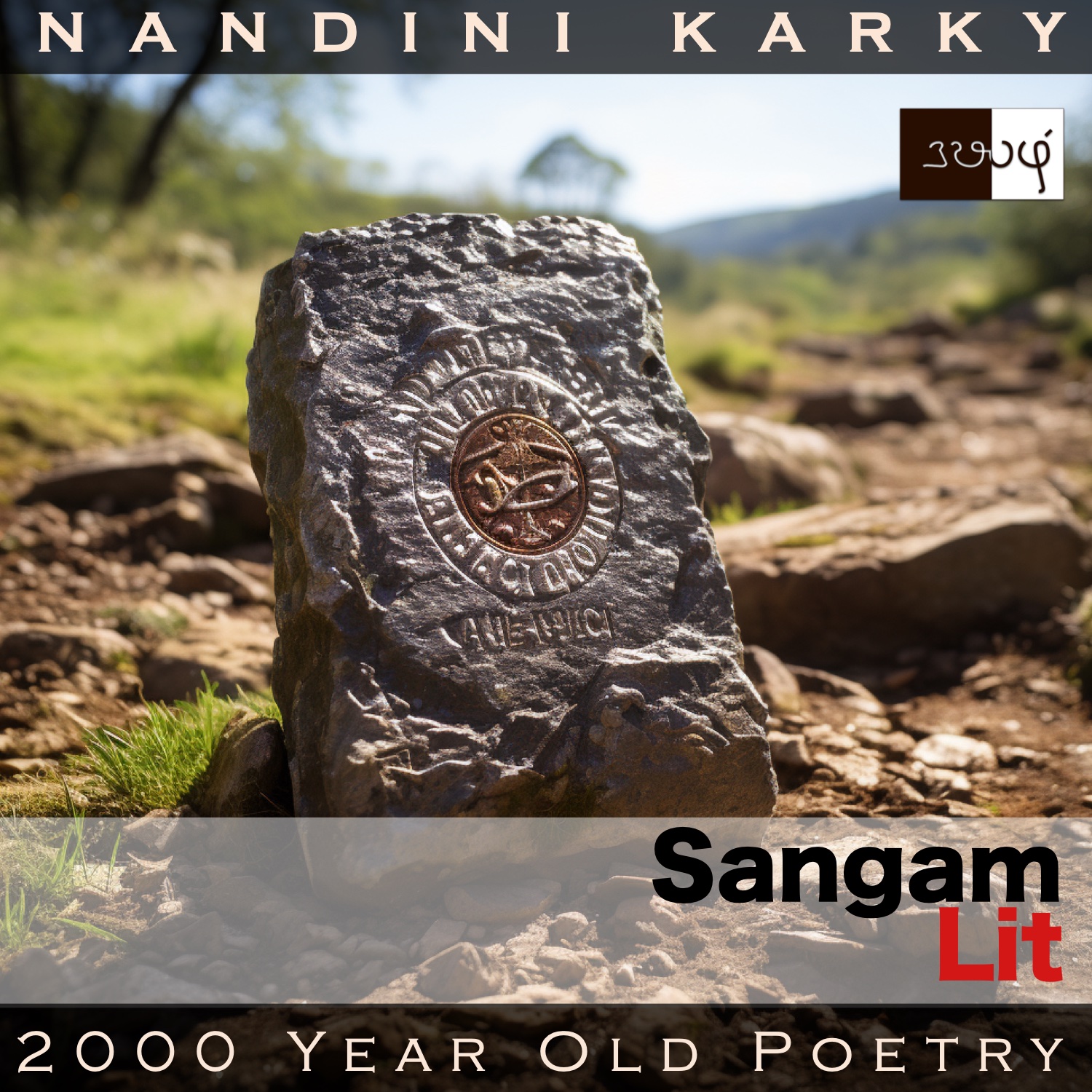Podcast: Play in new window | Download
Subscribe: Apple Podcasts | Spotify | Amazon Music | Android | iHeartRadio | TuneIn | RSS | More
In this episode, we listen to praise of a leader who had perished in a mission, as depicted in Sangam Literary work, Puranaanooru 263, penned by an anonymous poet. The verse is situated in the category of ‘Karanthai Thinai’ or ‘Cattle recovering’ and offers a word of advice to a supplicant.

பெருங் களிற்று அடியின் தோன்றும் ஒரு கண்
இரும் பறை இரவல! சேறிஆயின்,
தொழாதனை கழிதல் ஓம்புமதி; வழாது,
வண்டு மேம்படூஉம், இவ் வறநிலை ஆறே
பல் ஆத் திரள் நிரை பெயர்தரப் பெயர்தந்து,
கல்லா இளையர் நீங்க நீங்கான்,
வில் உமிழ் கடுங் கணை மூழ்க,
கொல் புனல் சிறையின் விலங்கியோன் கல்லே.
Another verse on the theme of controlling cattle. The poet’s words can be translated as follows:
“O supplicant holding a dark drum with a surface akin to a huge elephant’s foot! If you reach there, make sure that you do not pass by without worshipping; If you do, undoubtedly, this dried-up path is sure to turn into a bee-buzzing one. He was one who went chasing after those who had stolen a huge herd of cattle and he recovered it. When returning, even though all his ignorant helpers scattered away, he did not do so but stood there like a dam on the shore of a wild river, amidst speeding arrows that shot out to sink him. There stands the memorial stone of that great man!”
Let’s delve deeper into the verse. The poet begins by addressing a supplicant he meets on the way by remarking about the drum that bard is carrying, which the poet likens to the foot of an elephant. Pointing to the path ahead, the poet tells the supplicant to make sure that he worships at a place further ahead. Before he explains what that place is or its significance, the poet says that’s the only way that dried-up path before them would bloom lusciously, inviting bees in search of nectar. Let’s return to this imagined future of that path shortly.
Instead of revealing what’s ahead, the poet goes on to tell the story of a leader who went bravely to recapture their stolen herd of cows, and when returning, even though he was forsaken by his helpers, he did not swerve from his mission, and even as enemy arrows shot out to drown him, he had stood like a strong dam amidst a wild river and guarded the recaptured cattle. So, the mission was a success but the great man perished and now has become a memorial stone, the poet concludes, revealing that this was the place that he had asked the bard to bow and worship before going his way.
Returning to that description of a dried-up, arid patch of land becoming a bee-buzzing one, implying the spread of greenery with colourful flowers, one may wonder what good that would do to a supplicant. If we think deeper, we would understand that what the poet means is that the bard’s life of poverty would turn prosperous if only he were to pay his respects to that memorial stone. Through that, we understand the importance accorded to worshipping the dead and celebrating their greatness, something that goes on, even today, not only in the culture of Tamilnadu but as I recently saw in a documentary, in the life of people living in far away Okinawa, Japan, to whom worshipping their ancestors was a spiritual practice, something believed to add years of life to the living there. And thus, we find ourselves sailing from a moment in the Sangam past of Tamil land to a modern village in Japan on the boat of this thought to worship those gone by!




Share your thoughts...